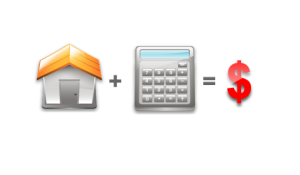How do Insurers Calculate Home Insurance Premium Rates?

Knowing how insurers calculate home insurance premiums will help you find ways to slash the figures.
Over the past decade or so, homeowners across the United States have seen a steady increase in their home insurance premium rates. The rates have risen by 36 percent across the nation from 2003 to 2010 and states such as North Carolina, South Carolina, Georgia, Florida, and Alabama have witnessed some of the sharpest spikes with Florida topping the list with an average hike of 91 percent. The steady rise in home insurance premium rates, not surprisingly, leaves many homeowners wondering about the methods of calculating these numbers. Knowing how insurers calculate home insurance premiums will help you find ways to slash the figures.
Given below are the factors that influence home insurance premium rates.
Building Characteristics
The cost of rebuilding your house is the primary determinant of home insurance premium rates. In this context, it is worth clarifying that replacement cost is not the purchase price of the house. So owners of luxury homes and sprawling houses have to pay more in insurance premiums than those who own modest dwellings.
The construction material used in building your house also plays a crucial factor in the calculation of premium rates. For instance, owners of homes built with wood, which is more vulnerable to damage from the elements and fire incidents, have to pay more than homeowners living in brick or masonry structures. Similarly, owners of older homes that are at increased risk of damage from the elements have to pay more premiums than homeowners who live in modern buildings.
In this context, it is worth mentioning that home improvement measures and/or weather upgrades can bring in premium discounts. Installing security features such as burglar and smoke alarms, sprinkler systems, fireproof roofing materials, deadbolts on doors, and fortifying the windows also brings down the premium rates because insurance agents perceive these homes to be adequately protected from burglar attacks and weather ravages.
Insurance carriers are known to be nitpicking when it comes to settling home insurance premium prices. Many homeowners who live far away from the fire department or a source of water find themselves shelling out more in insurance prices than those live within easy reach of these services. Similarly, having a wood furnace or a wooden stove in the house is a cause for concern for insurance carriers who respond by promptly hiking premium rates for these homeowners. Insurance agents are wary of premises liability claims and so demand high premiums from homeowners who run their businesses from their residences or have dangerous breeds of dogs or certain other animals as pets.
Your Personal Details and Characteristics
Apart from the characteristics of the building you reside in, home insurance premium rates also depend on some subjective parameters like the particular type of coverage plan you opt for, the amount of deductible you pay (the higher this amount, the lower will be premium), your credit worthiness, your claims history, and how timely you make the premium payments. Sometimes insurance carriers offer discounts to their long-standing customers and to those who bundle several policies with a single carrier.
The above-mentioned factors guide insurance agents when they try to determine the insurance premium rates. Read their minds and take steps to bring down your home insurance premium!
